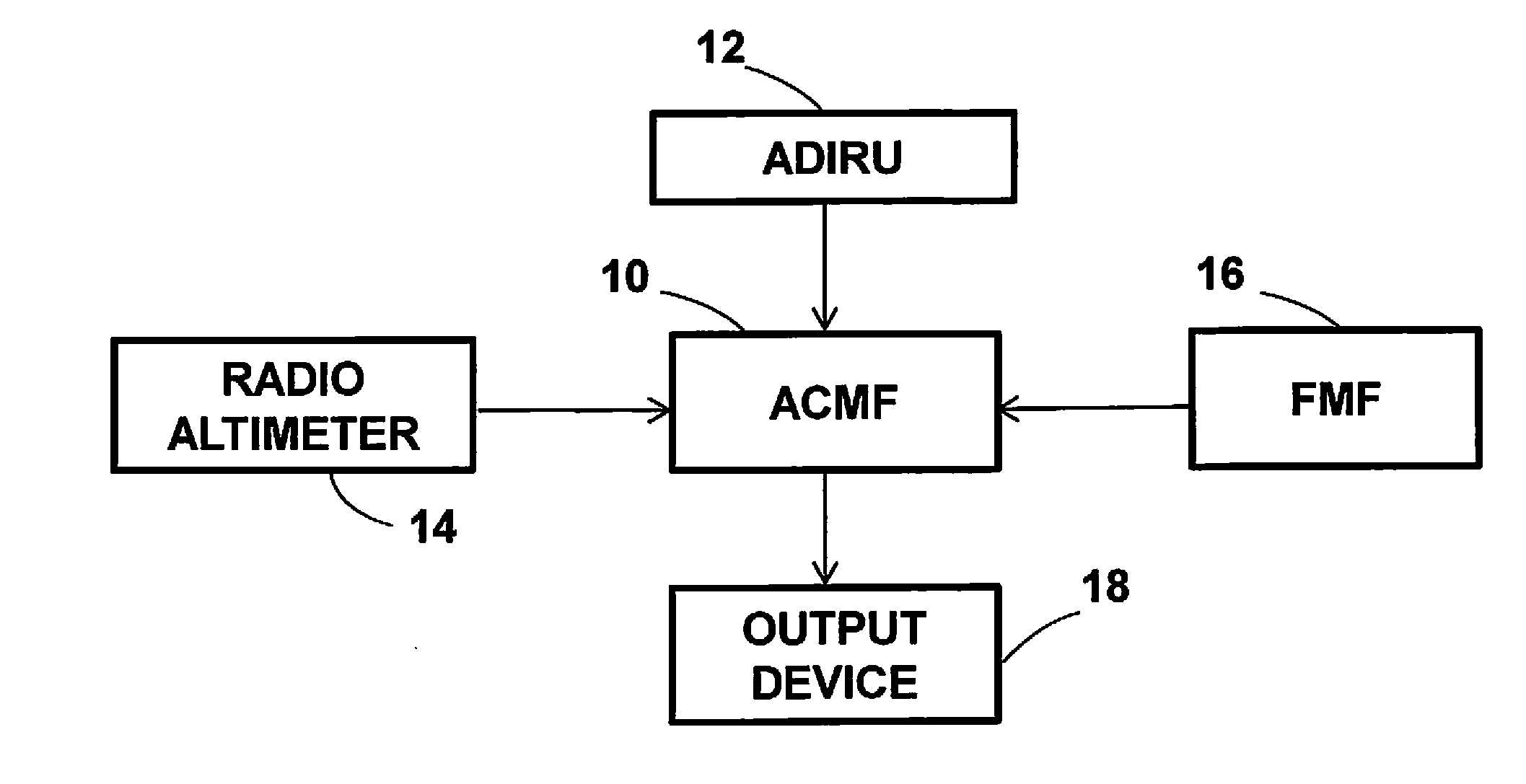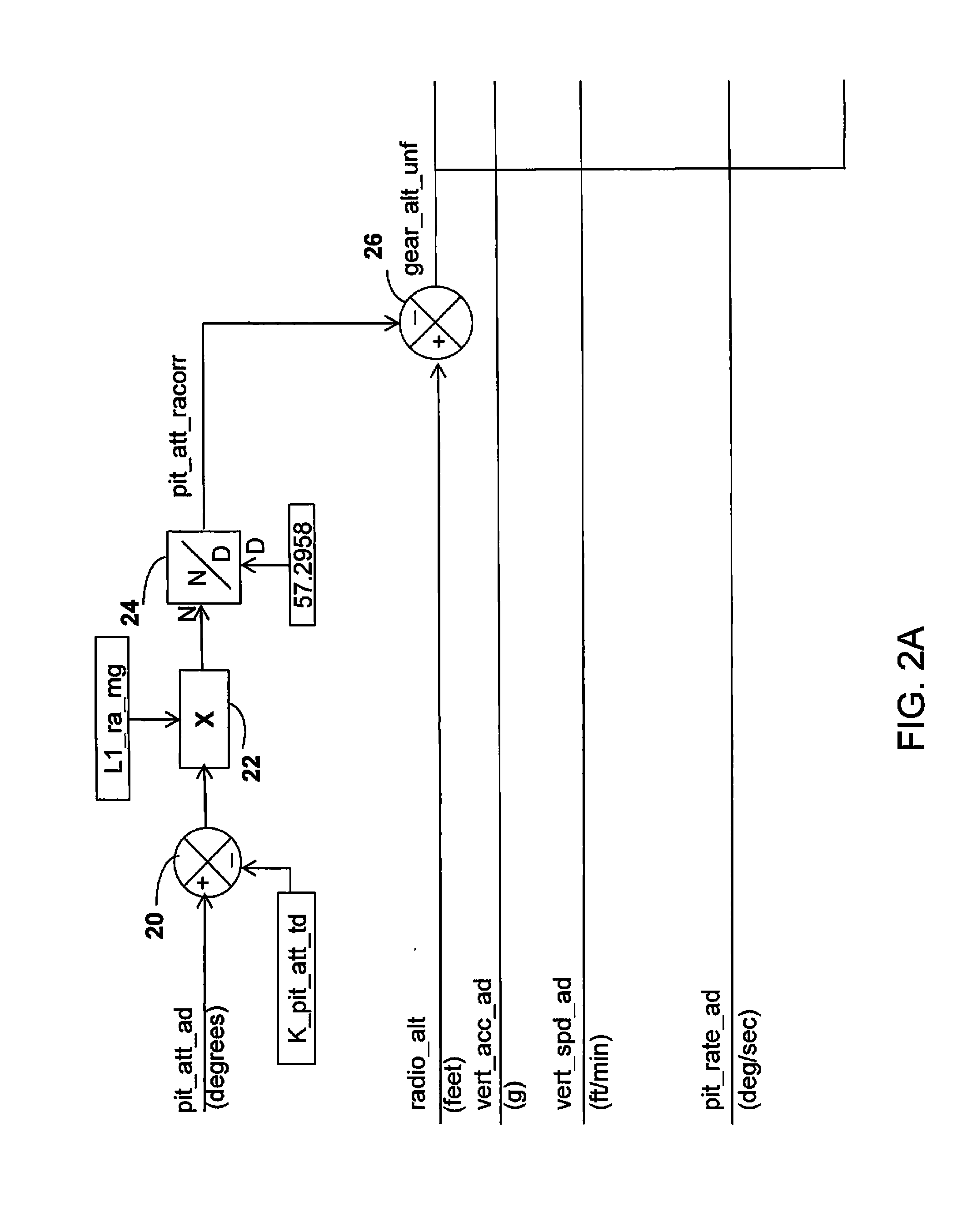Hard Landing Report Based on Sink Rate Algorithm
a sink rate and hard landing technology, applied in the field of aircraft maintenance, can solve problems such as damage to the aircraft's ability to fly safely, adversely affecting the structural integrity of the airframe, and inspection process, and achieve the effect of improving dependability
- Summary
- Abstract
- Description
- Claims
- Application Information
AI Technical Summary
Benefits of technology
Problems solved by technology
Method used
Image
Examples
Embodiment Construction
[0015]The embodiments of the invention disclosed herein comprise an airplane condition monitoring function (ACMF) hosted on an Airplane Information Management System (AIMS). The AIMS is a general purpose computer that hosts many software applications. The ACMF in the disclosed embodiments comprises various software applications (hereinafter referred to as “logic units”). As will be disclosed in more detail hereinafter, one logic unit of the ACMF calculates a sink rate parameter at 20 Hz, and another logic unit of the ACMF triggers a sink rate report on every landing. A third logic unit of the ACMF triggers a hard landing report if certain preconditions have been satisfied. Although the present invention may be implemented in software running on a general purpose computer, other embodiments may be implemented in software residing on customized processors or line replaceable units (LRUs).
[0016]FIG. 1 shows the main components of a hard landing detection system in accordance with one e...
PUM
 Login to View More
Login to View More Abstract
Description
Claims
Application Information
 Login to View More
Login to View More - R&D
- Intellectual Property
- Life Sciences
- Materials
- Tech Scout
- Unparalleled Data Quality
- Higher Quality Content
- 60% Fewer Hallucinations
Browse by: Latest US Patents, China's latest patents, Technical Efficacy Thesaurus, Application Domain, Technology Topic, Popular Technical Reports.
© 2025 PatSnap. All rights reserved.Legal|Privacy policy|Modern Slavery Act Transparency Statement|Sitemap|About US| Contact US: help@patsnap.com



